Ravioli with Rosi
Life lessons learned in the kitchen
I just started a 3-month run of classes about Southern Italy for Context Travel. Join me online every Thursday at 7 pm ET. (If you can’t attend live, the recording will be sent to you.)
This week’s class, “The Real Housewives of the Vesuvius Coast,” visits Herculaneum and Torre Annunziata to unearth the mega-mansions of ancient Rome’s elite.
See my full menu of classes here: https://www.contextlearning.com/collections/danielle-oteri.
I have a theory that the past twenty years of cooking shows have made us more reluctant to cook than ever before.
People who have fed their families for years will downplay their expertise by saying they don’t have good knife skills or can’t put ingredients together like the chefs do on “Chopped.” Online platforms like Masterclass feature famous restaurant chefs who intend to reveal their secrets. Still, restaurant cooking is undeniably different, and the home cook drifts further out to sea. Before you know it, everyone is ordering meal kits with the garlic already chopped (presumably by someone with knife skills) and wrapped in four layers of plastic that will remain on earth long enough to witness the next Ice Age.
The antidote? Meet Rosi di Stasi from Felitto, a small mountain village in the Cilento National Park. A few hours with Rosi teaches you the pillars of Italian cooking, which also happen to be excellent life lessons: 1) Do the best with what you have, 2) do so with love, and 3) do it together.
We invited Rosi to visit Borgo La Pietraia and teach a group of food writers how to make traditional fusilli pasta. Any longish noodle in South Italy might be called fusilli, even if the length and width vary. The recipe from Felitto, recognized by Slow Food, uses eggs and was therefore considered a more decadent pasta made for Christmas or Easter.
The dough is mixed and kneaded by hand, then divided into small pieces. The fusilli are formed by rolling each piece against a metal rod no thicker than an umbrella spoke. Rolling the dough extends it as far as possible —making the most of it. The end product is like bucatini but more delicate and designed to hold the sauce well.
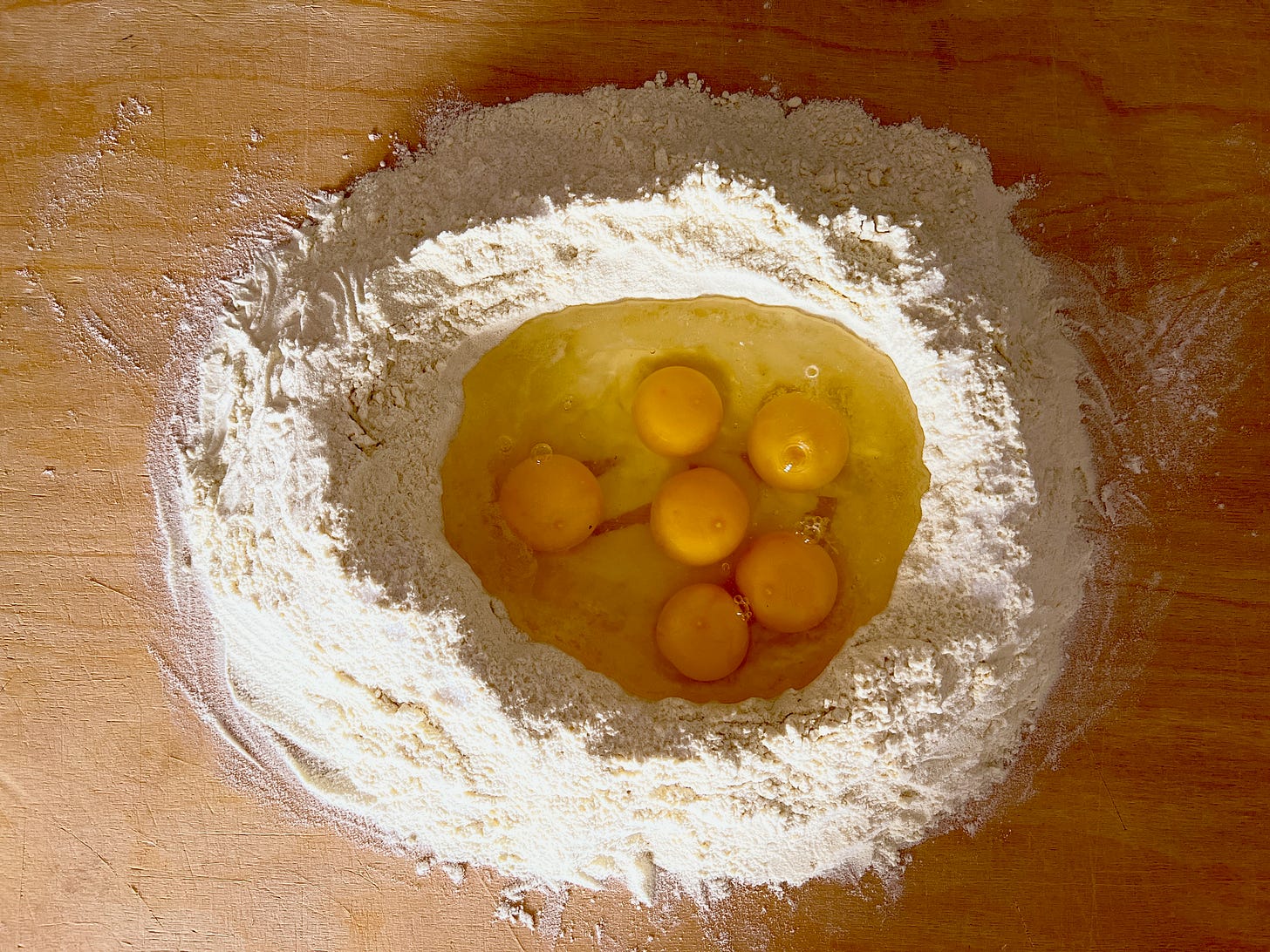
Making fusilli by hand is simple, but does require practice to build muscle memory. It was never a solitary task but one that women would traditionally do together for hours on end, with all sorts of secrets and wisdom imparted.
With the leftover dough, Rosi moved on to ravioli filled with cheese and a little bit of parsley.
Each was an imperfect love letter —considered, held, sealed with a fork, dropped into boiling water, and dressed with tomato sauce and a large spoonful of grated cheese.
I’ve had ravioli so many times before, but there is only one I will never forget.
Thank you to Arianna Scariati @southitalyexpert for organizing the class with Rosi and for constantly mining the jewels of Cilento.



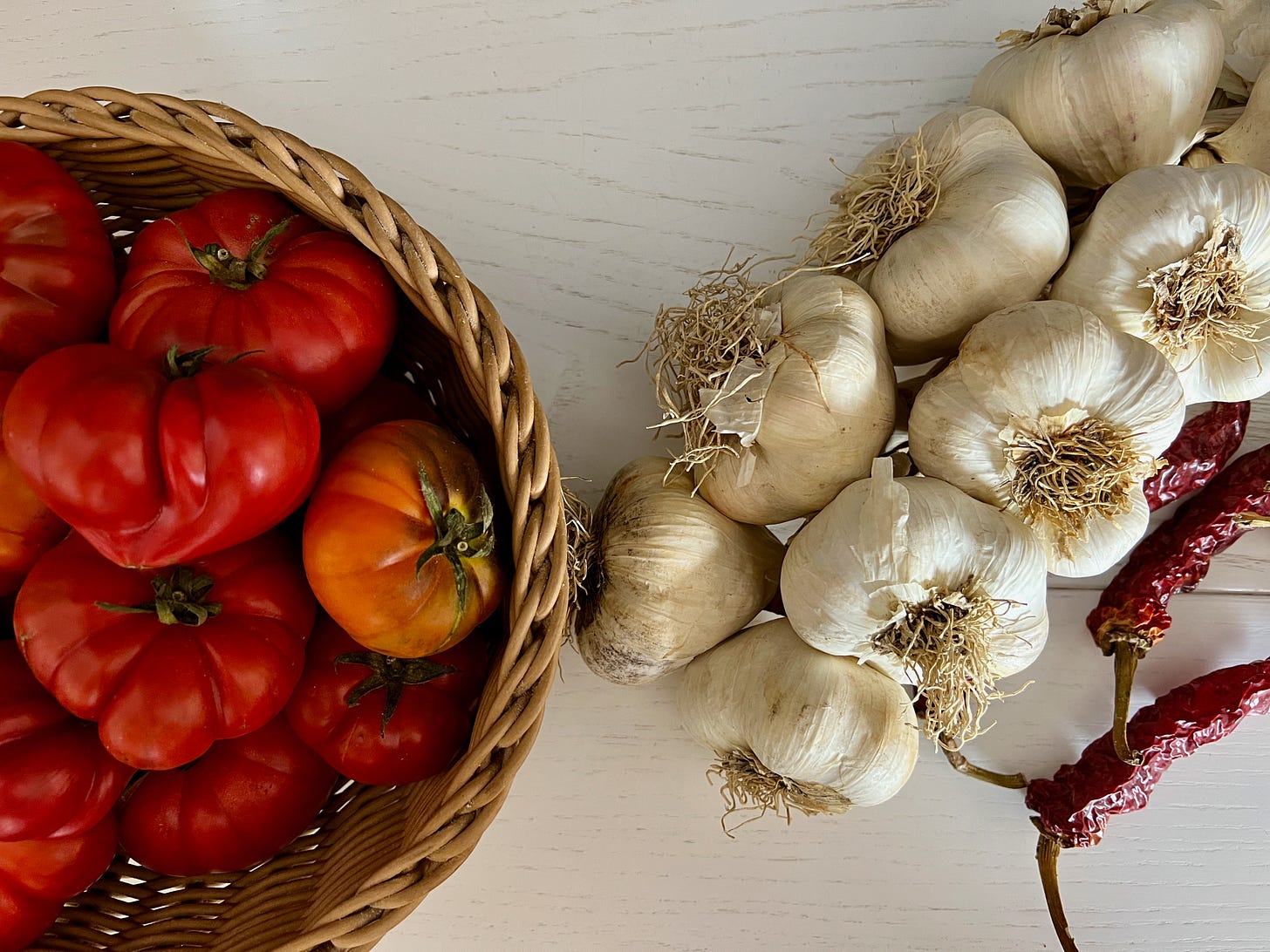
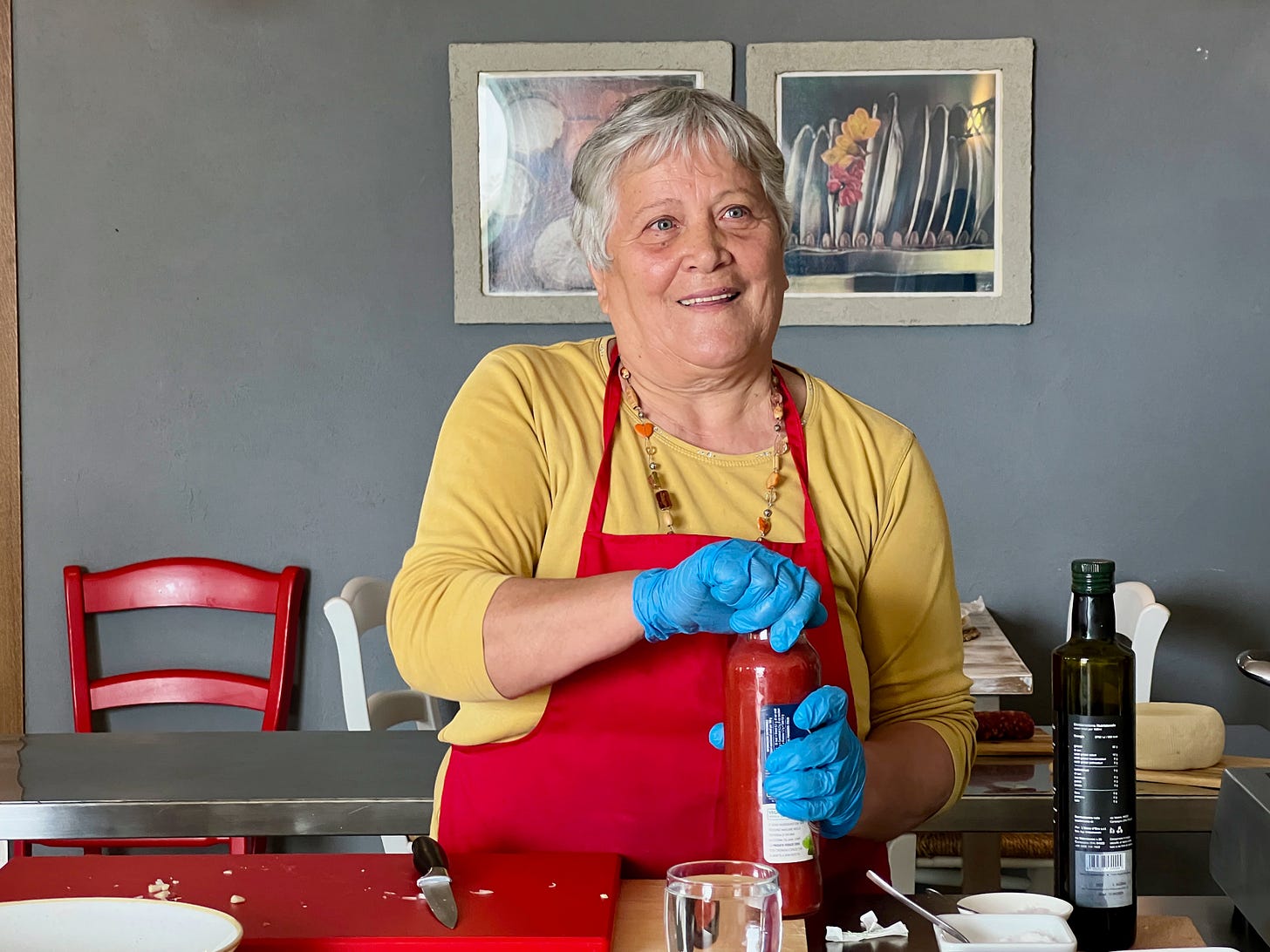
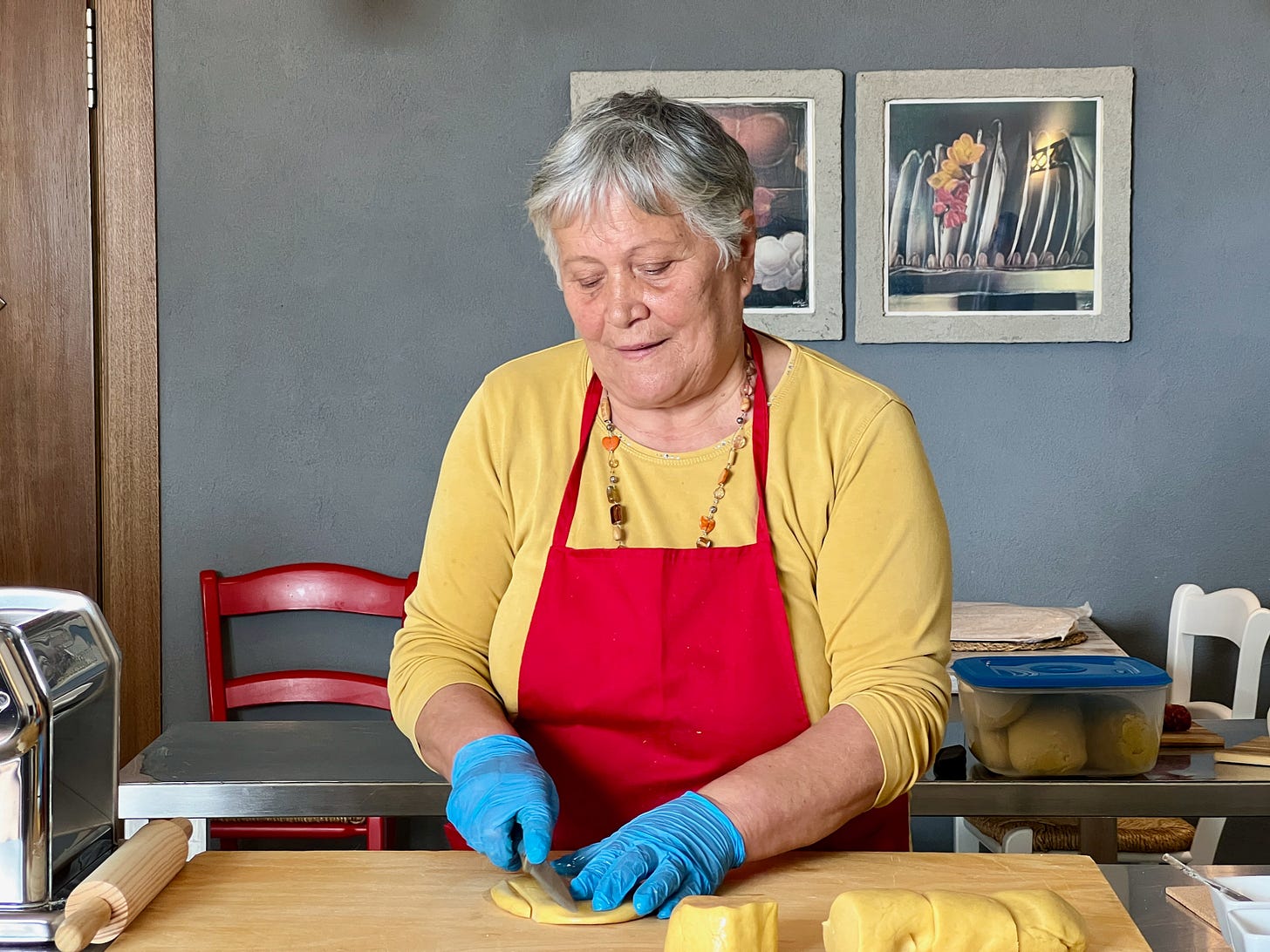

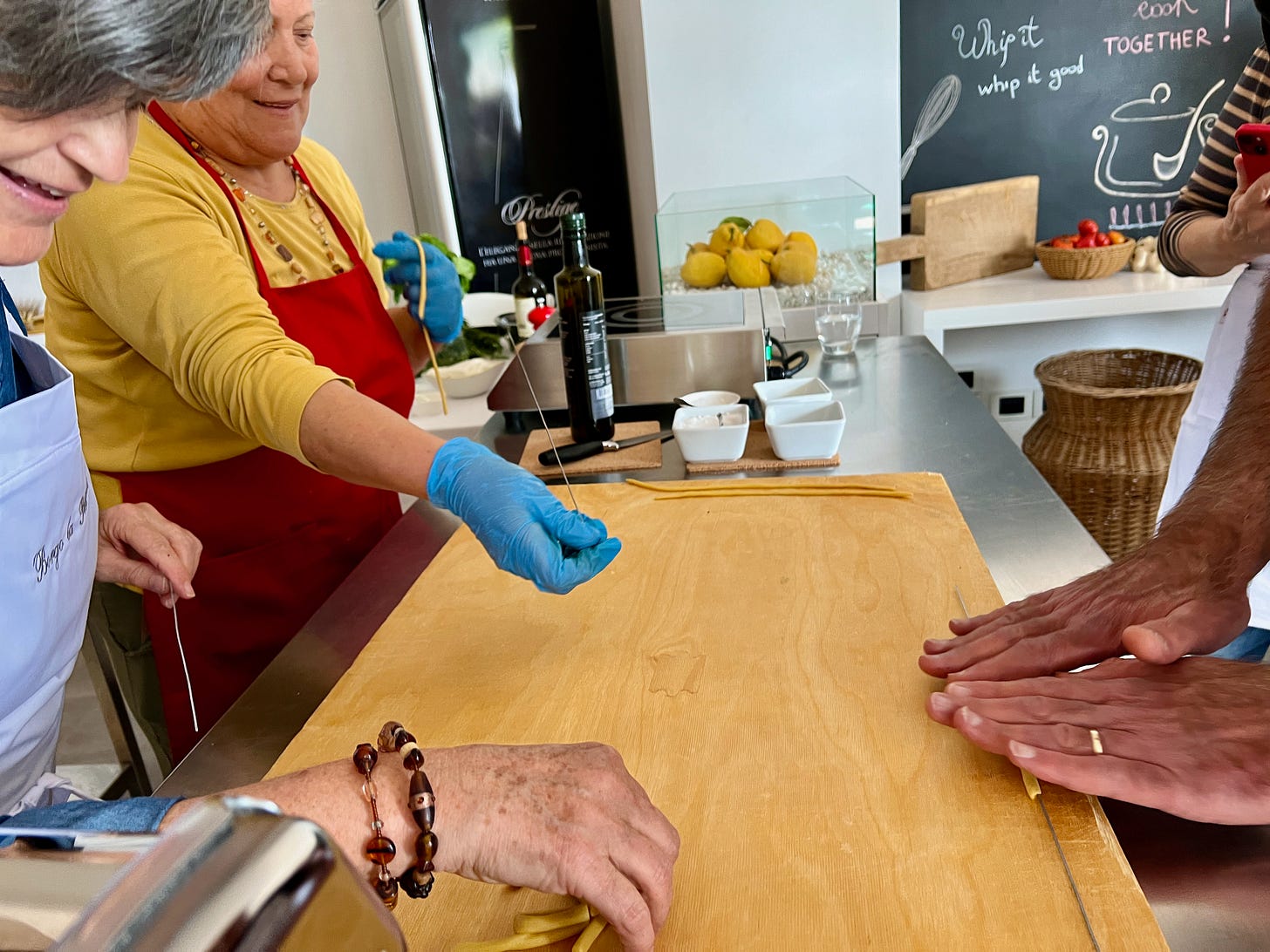

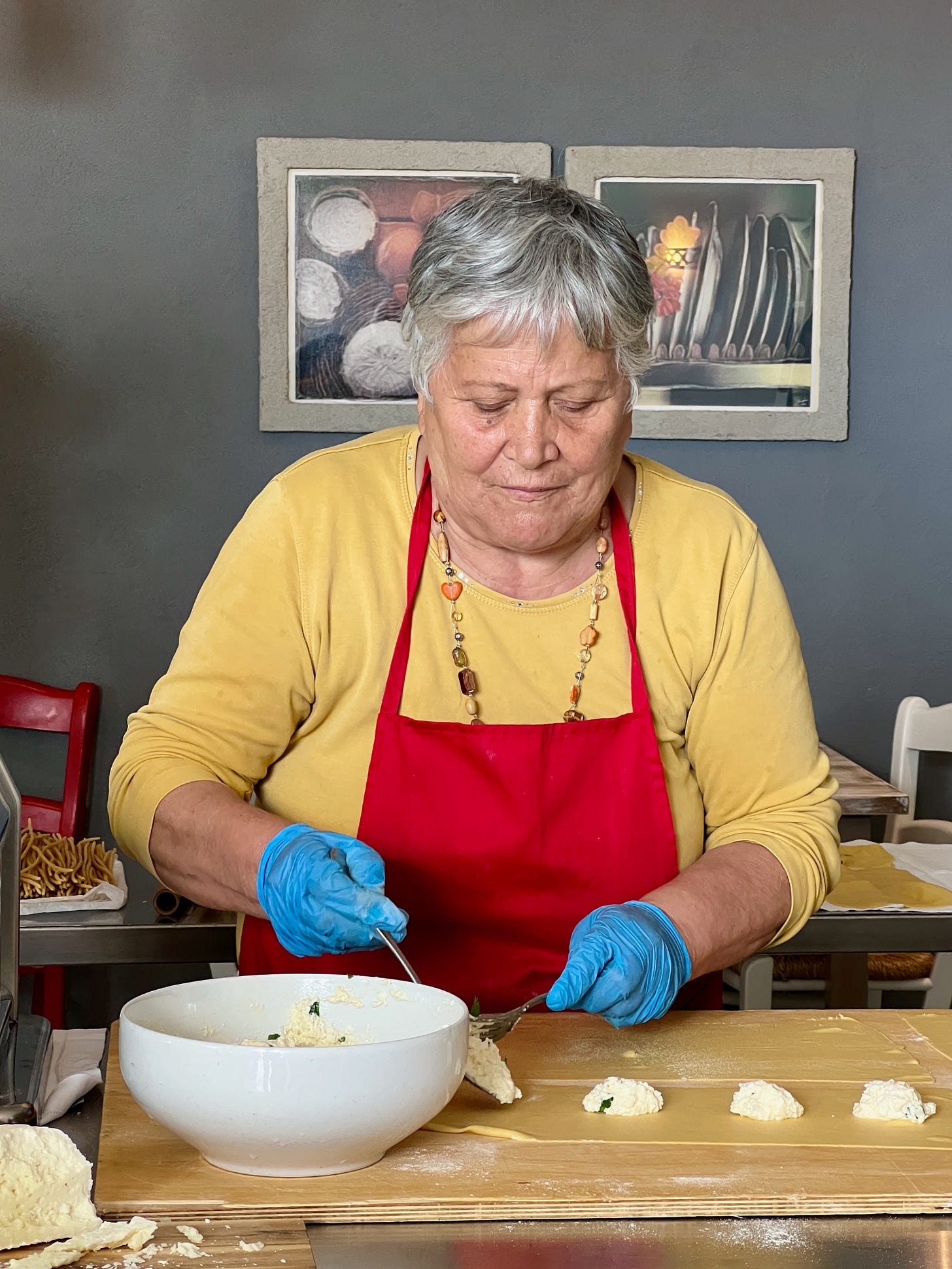
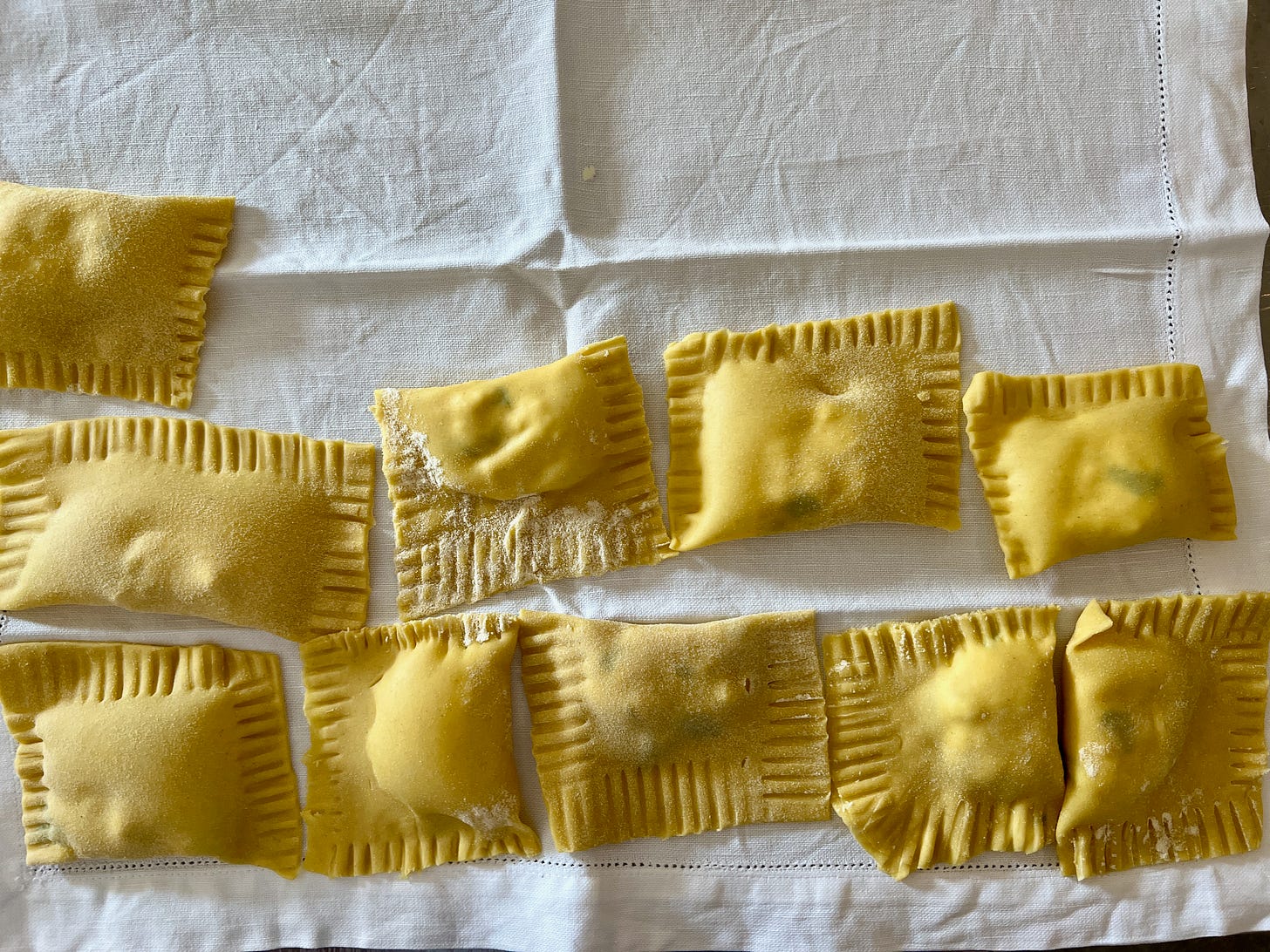
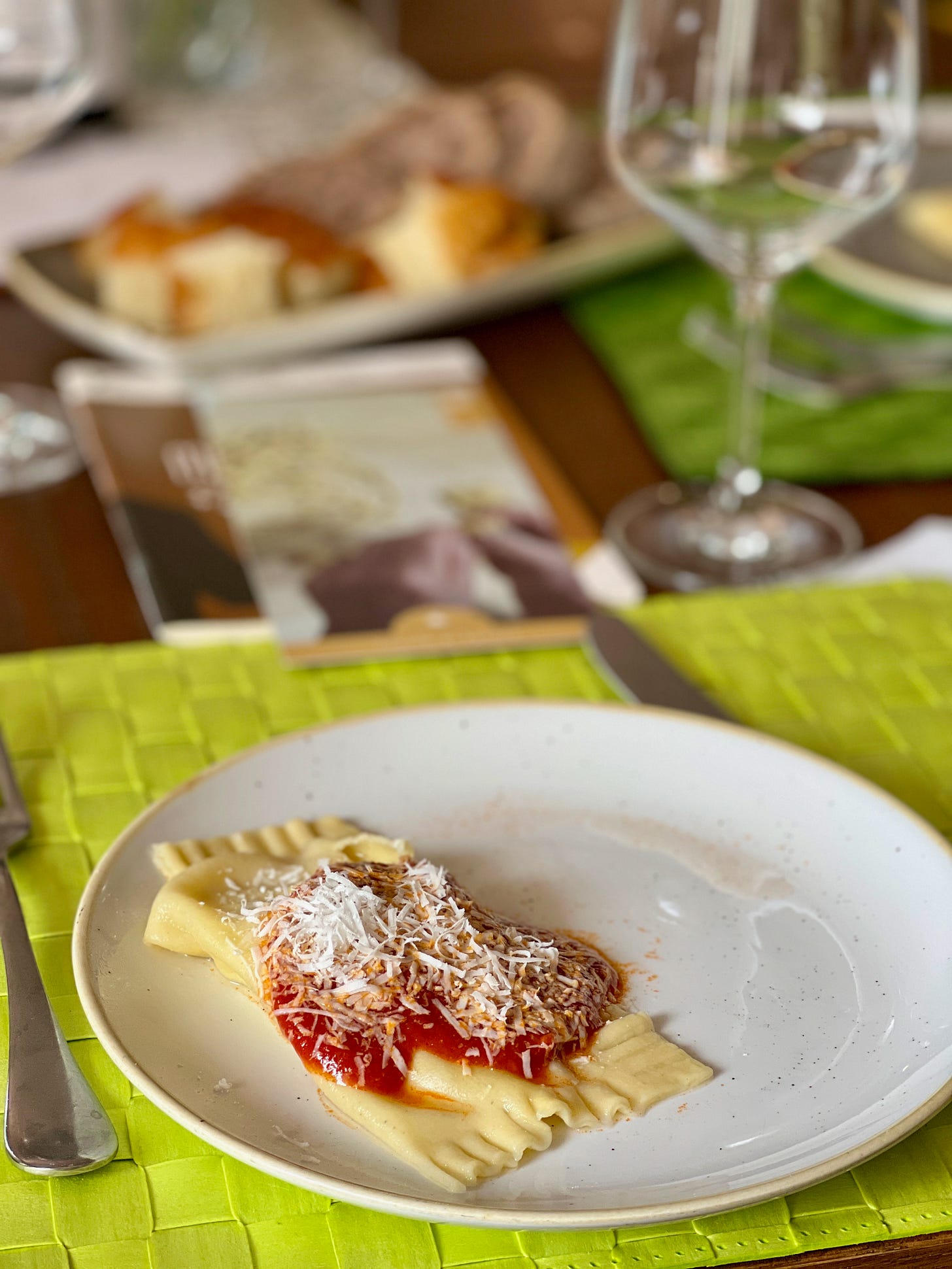
The Cilento is so special. I need to take another trip there & eat this pasta!
This was a memorable day, one of the (many) highlights for Food Writers in Cilento. What a privilege to spend time with and watch Rosi.